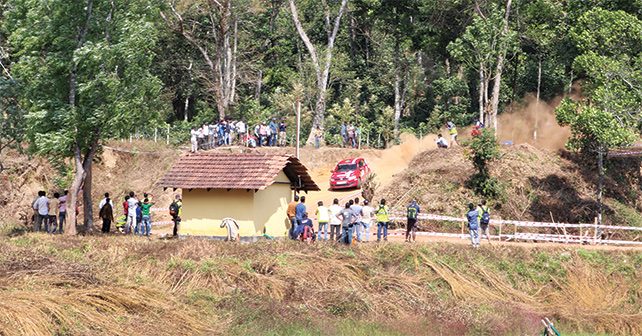
Vinayak feels that calling arena and city-based motorsport the future, is missing the point of motorsport itself.
Some time ago, we received an e-mail from a major German manufacturer asking to do an interview with Mattias Ekstrom – the newly crowned FIA World Rally Cross champion. His replies to our questions seemed standard enough, with plenty of praise being heaped on the WRX format of races – which provide quick and exciting heats in an arena-based venue building up to a final.
It’s genuinely fun to watch, but at present it’s still seen as a new trend. Senior motorsport journalists at leading publications even going so far as to state that Volkswagen’s exit from WRC and the World Endurance Championship has less to do with ‘Dieselgate’ and more to do with their belief in this shift towards the instant dose of adrenaline that you get from WRX and eventually electric rallycross and city-based racing events like Formula E.
The reasoning being that audiences will gravitate towards motorsport in this format, rather than investing the time and effort required to go out into the great wide open of rally stages and sprawling, purpose-built racetracks. The die, it seems, was cast – but there is a partial counter argument to be made. And I stress the word partial, as I am fully in favour of the development of electric and other alternative means of propulsion – in both two and four-wheel motorsport.
Isle of Man TT superhero John McGuinness lapping the infamous 60.72km loop at an average speed of 192km/h on an electric bike in 2015 is proof of how exciting green tech can be without sacrificing the venues that made motorsport thrilling in the first place. And, as far as the reach of such an event is concerned, you need only look at the number of people who converge around the entire course for such an event. Case in point was the Coffee Day India Rally at Chikmagalur, which was the season finale for the FIA Asia Pacific Rally Championship and the penultimate round of the FMSCI Indian National Rally Championship. The buzz for the event was palpable, with posters all over Chikmagalur as well as billboards at the rally stages wishing Gaurav Gill on his 35th birthday!
Spectators set up canopies and seats wherever they could find space and watched the APRC and INRC machines blast past. The serious fans, meanwhile, also followed live stage times online. On top of that, you have an army of spectators recording and posting to social media with their cell phones, and further spreading the message. Suddenly, the counter argument to arena or city based events makes sense. How do you compare the crowd that comes to an arena with the spectators who come to a super special stage and those who follow a rally for the entire route?
The answer is that you can’t. After all, entire cities get bitten by motorsport fever when a big racing event comes to town. This was apparent to me even when the Rally de North came to Haryana, despite the fact that it didn’t pan out as expected. The small village of Tauru, right next to a highway, now knows that there is such a thing as rallying in India – and that everything from Gypsys, old Honda Citys to Polos and XUV 500s can be thrown about with abandon. Now imagine if one day all these vehicles were powered by clean tech but retained motorsport’s heart, which isn’t sound. To me it beggars belief how people can be hung up on that over speed and competition. The heart of motorsport is the idea of being out in the great wide open, away from confinement.























Write your Comment